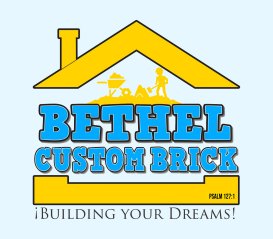Tuckpointing is an essential maintenance process for brick and masonry structures, ensuring their longevity, structural integrity, and visual appeal. However, for many homeowners, understanding the costs associated with tuckpointing can be challenging. If you’re considering this repair for your brickwork, here’s a breakdown of what to expect and the factors that influence the price.
What is Tuckpointing?
Tuckpointing involves removing deteriorated mortar from the joints between bricks and replacing it with fresh mortar. The process not only strengthens the structure but also restores its appearance by creating clean, uniform lines. This is crucial for maintaining the stability of masonry buildings, chimneys, walls, and other brick features.
Average Costs of Tuckpointing
The cost of tuckpointing varies depending on several factors, including the size of the area being repaired, the complexity of the project, and the condition of the existing mortar. Here’s an overview of typical costs:
- Per Square Foot: Tuckpointing costs generally range from $5 to $35 per square foot. Smaller areas may fall on the higher end of this range due to minimum labor charges.
- Per Project: For an average-sized home, tuckpointing may cost between $500 and $3,500, depending on the scope of the work.
- Chimney Tuckpointing: Repairs for chimneys often range from $300 to $2,000, depending on the height and accessibility of the chimney.
Factors That Affect Tuckpointing Costs
1. Extent of Damage:
The condition of the mortar joints plays a significant role in determining costs. Extensive damage requiring deeper removal and replacement will increase labor and material costs.
2. Accessibility:
Hard-to-reach areas, such as chimneys or tall walls, may require scaffolding or specialized equipment, adding to the overall expense.
3. Type of Brickwork:
Historic or decorative brickwork often requires more time and precision to match the original mortar color and texture, which can increase costs.
4. Size of the Project:
Larger areas of damaged mortar require more labor and materials, resulting in higher costs. However, larger projects may have a lower per-square-foot cost due to economies of scale.
5. Labor Rates:
Labor costs vary by location and the expertise of the contractor. Hiring skilled professionals ensures high-quality results, but it may come at a higher price.
6. Material Costs:
The type of mortar and additional materials used for the project can also influence the final cost. Custom mortar mixes or specialty materials for historic preservation may cost more.
Why Tuckpointing is Worth the Investment
While tuckpointing costs may seem significant, it’s a worthwhile investment for several reasons:
- Prevents Structural Damage: Timely tuckpointing prevents costly repairs by addressing mortar deterioration before it compromises the structure.
- Enhances Curb Appeal: Restored brickwork improves the appearance of your home, increasing its value.
- Extends Masonry Lifespan: Regular maintenance ensures that your brick or stone structures last for decades.
Tips for Budgeting and Hiring Professionals
- Get Multiple Quotes: Reach out to several contractors to compare costs and services.
- Check Credentials: Ensure the contractor has experience in tuckpointing and proper licensing.
- Ask About Guarantees: Reputable contractors often offer warranties for their work.
Partner with Bethel Custom Brick for Expert Tuckpointing Services
At Bethel Custom Brick, we provide professional tuckpointing services tailored to meet your needs and budget. Serving the Detroit Metro area, our skilled team ensures high-quality craftsmanship to restore and maintain your masonry. Contact us today for a consultation and an accurate estimate for your tuckpointing project!


